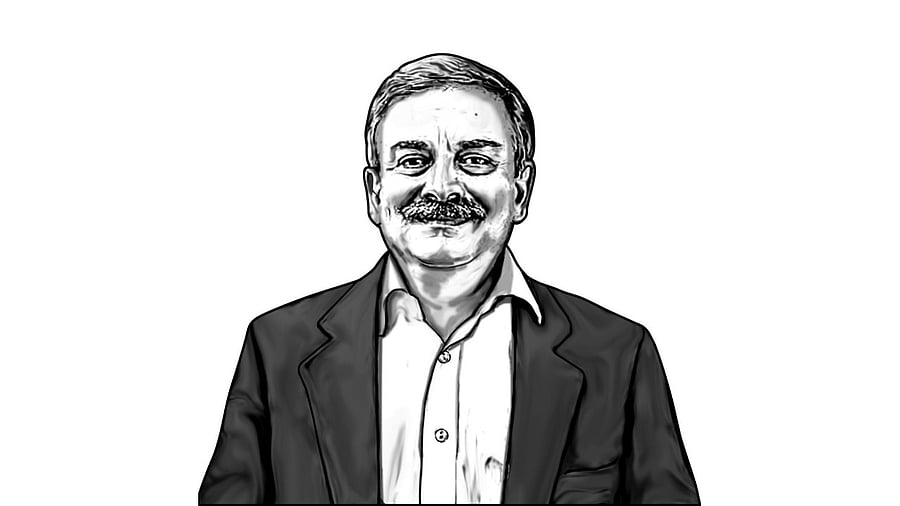
It is a quirk of history that the foundational ideas of Artificial Intelligence and Robotics -- and consequently, some of the exciting advances of the 21st century -- should be inspired by prescient fiction. Cast your mind back to science fiction that you read in school, and Isaac Asimov’s robot stories, who’s iconic ‘I Robot’ established his formidable legacy in which science meets fiction.
Born in 1920 in Soviet Russia, Asimov was three when he and his family arrived at Ellis Island and began to struggle for a living in New York. He started reading science-fiction at nine, when the genre was transiting from pulp fiction to a more science-centred genre. A prodigy, Asimov graduated from high school at 15 and, a distinctive vision of science fiction as ‘the literature of social change’ took shape in his mind. In 1938, he joined a remarkable sci-fi club, aptly named the Futurians. The group called for science fiction to raise ‘the torch of science’ and unfurl ‘the flag of reason’ to foster a more united and humane society.
Asimov spent more than half of the 20th century, thereafter, advancing the transformative unity of art and science; razing the make-believe boundary between imagination and reason. Together with Robert Heinlein and Arthur C Clarke, Asimov represented the golden age of science fiction, inspiring readers to embrace the transformative computer revolution and the rise of the emerging space age.
Asimov’s annus mirabilis was 1941-42: publishing Nightfall, portraying in brilliant fashion, humankind’s psychological confrontation with its own insignificance in the cosmos; and releasing Foundation, the first book of his eponymous series and a classic of future history foretold using what Asimov describes as the statistical science of ‘psychohistory’. An epic that highlights the struggles of human agency against the ‘dead hand of social inevitability’, a theme that assumes unnerving relevance in today’s algorithm-driven big data society. In 1966, the Foundation Trilogy won the Hugo Prize for the best science-fiction series ever written.
The idea of robots taking over human society, in the not-so-distant future, continues to spark the literary and scientific imagination. This may be attributable, in part, to the fact that robots have often been presented as humanoids. Such humanoid representation has often raised questions concerning the ability of robots to act morally and respectfully toward human beings. Though, I dare say, whether humans act morally and respectfully toward other humans is, in the present day, a more urgent ethical question.
Asimov’s three laws of robotics, which first appeared in a story called Runaround, published in March 1942, is the best-known framework on this question. However, in reading Asimov’s Bicentennial Man, several issues relating to the emerging field of machine ethics arise. The goal in Robotics is to strive to invent autonomous machines that also function ethically, but in this endeavour, several challenges emerge. An alternative, instead, toward the task of making ethics computable is to create a programme that enables a machine to function as an ethical adviser to human beings. This, unlike inventing an autonomous ethical machine, will not require us to make a judgement about the ethical status of the machine itself, a judgement that will be particularly difficult to make.
Asimov worked as a scientist in the US Navy during WWII, and after completing his PhD in chemistry from Columbia, took to teaching biochemistry at the Boston University School of Medicine. Soon, he plunged into educating the public and advocating a sustainable future. In 1958, he took to science writing, culminating in the lucid and insightful The Intelligent Man’s Guide to Science -- the one book of Asimov that you must read even if you choose to not read his superb multi-layered fiction. Asimov’s is a voice of reason -- one that has urgent relevance today -- anchored in his conviction that ‘science is tentative, that it is not certain, that it is subject to change.’ This made him a staunch critic of pseudoscience, superstition, and intolerance; and hence his lament that ‘the saddest aspect of life right now is that science gathers knowledge faster than society gathers wisdom.’ Asimov recognised that the consequence of this disconcerting disconnect was that the good earth is dying, long before anxious idioms like the sixth extinction or the Anthropocene epoch emerged.
Carl Sagan described Asimov as the ‘great explainer’. Even as we tire of humankind’s insatiable desire for material progress crushing the diversity of life on earth, and sectarian conflicts push us precipitously down the slippery slope, we would do well to read Asimov and journey to the intersection of science and art. Then, we might yet champion secular reason in an age when the light of critical thinking has dimmed; and in humility, gain a saner, humane view of our world.
What’s more, you get to travel the universe!